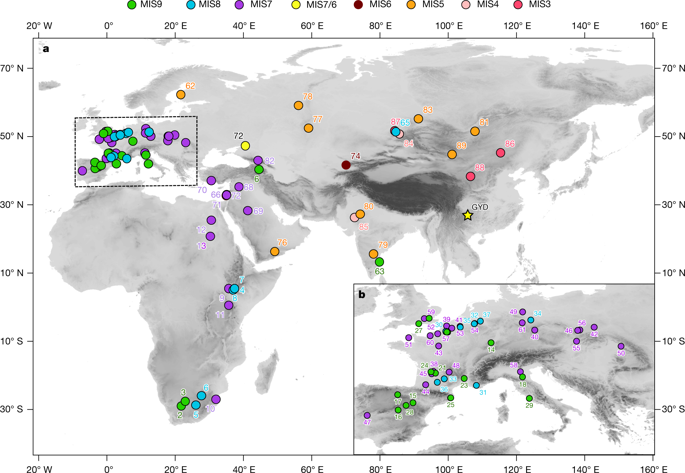Our official English website, www.x-mol.net, welcomes your feedback! (Note: you will need to create a separate account there.)
Late Middle Pleistocene Levallois stone-tool technology in southwest China
Nature ( IF 64.8 ) Pub Date : 2018-11-19 , DOI: 10.1038/s41586-018-0710-1 Yue Hu , Ben Marwick , Jia-Fu Zhang , Xue Rui , Ya-Mei Hou , Jian-Ping Yue , Wen-Rong Chen , Wei-Wen Huang , Bo Li
Nature ( IF 64.8 ) Pub Date : 2018-11-19 , DOI: 10.1038/s41586-018-0710-1 Yue Hu , Ben Marwick , Jia-Fu Zhang , Xue Rui , Ya-Mei Hou , Jian-Ping Yue , Wen-Rong Chen , Wei-Wen Huang , Bo Li

|
Levallois approaches are one of the best known variants of prepared-core technologies, and are an important hallmark of stone technologies developed around 300,000 years ago in Africa and west Eurasia1,2. Existing archaeological evidence suggests that the stone technology of east Asian hominins lacked a Levallois component during the late Middle Pleistocene epoch and it is not until the Late Pleistocene (around 40,000–30,000 years ago) that this technology spread into east Asia in association with a dispersal of modern humans. Here we present evidence of Levallois technology from the lithic assemblage of the Guanyindong Cave site in southwest China, dated to approximately 170,000–80,000 years ago. To our knowledge, this is the earliest evidence of Levallois technology in east Asia. Our findings thus challenge the existing model of the origin and spread of Levallois technologies in east Asia and its links to a Late Pleistocene dispersal of modern humans.Levallois stone-tool technology found at the Guanyindong Cave site in southwest China was dated to approximately 170,000–80,000 years ago, which is much earlier than previously thought.
更新日期:2018-11-19



























 京公网安备 11010802027423号
京公网安备 11010802027423号